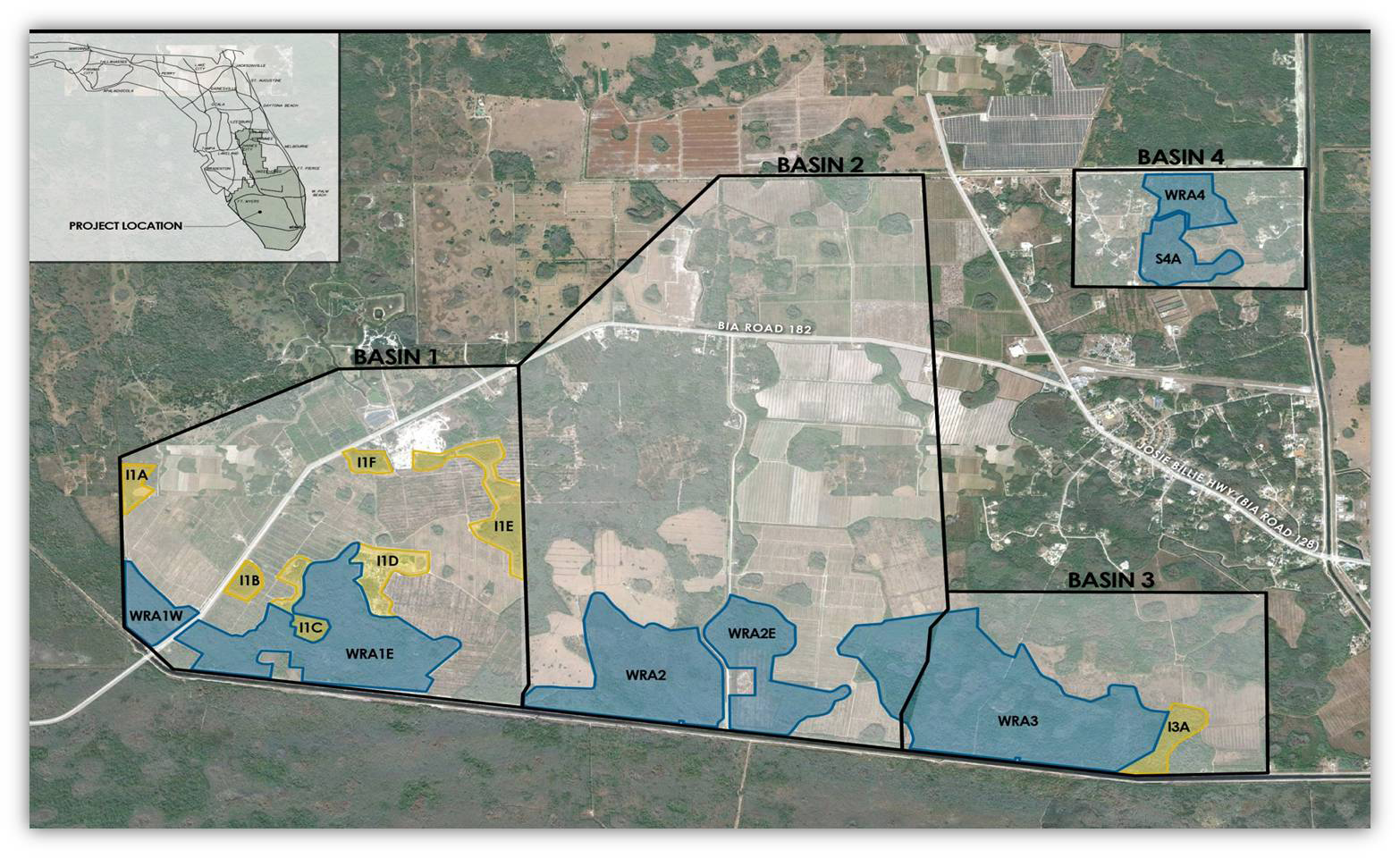

Background
The Big Cypress Seminole Indian Reservation Water Conservation Plan project was authorized in the Water Resources Development Act of 1996 as a critical restoration project. The project will rehydrate wetlands, and improve water quality and water storage capacity on the Seminole Tribe’s Big Cypress Basin Reservation, the Big Cypress National Preserve, and the Everglades Protection Area. The project accommodates the Seminole Tribe of Florida’s water entitlement, supports sustainable agriculture, and contributes to the restoration of the western Everglades ecosystem basin. The project is 50-50 cost-shared with a $60 million total project funding capacity.
Project Benefits
The project provides these beneficial effects:
- Improves 14,000 acres of swamp, hardwood hammocks, cypress sloughs, prairies and pine flatwoods.
- Provides water quality treatment of agricultural water runoff within the reservation by naturally removing phosphorus and other pollutants that otherwise would be discharged to the Big Cypress Preserve and Everglades Protection Area.
- Reduces the likelihood of exotic plant infestations on native lands and revive the historic patchwork of wetlands, uplands, and transitional areas.
- Prevents extended periods of flooding on agricultural lands through a network of constructed water retention areas.
- Enhances hydroperiods in the Big Cypress Preserve.
Project Features
The project consists of constructed features within three basins on tribal lands that include, in total:
- 6 irrigation cells that will provide stormwater protection for the adjacent agricultural fields.
- 4 water resource areas (WRA) that receive stormwater discharges from the irrigation cells and the non-agricultural areas.
- 24 pump stations with capacities ranging from 7–256 cubic feet per second.
- A series of culverts in and along the existing and new canals.